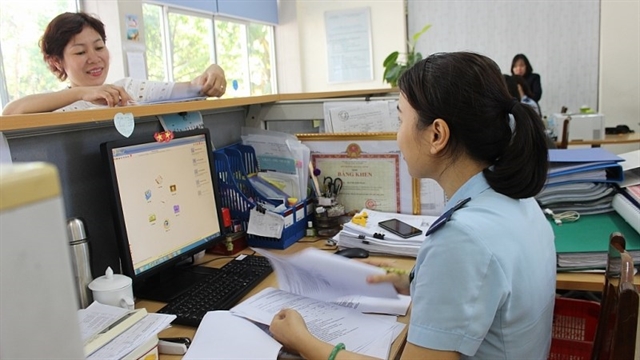
HÀ NỘI — The coronavirus (COVID-19) pandemic continues to drag on local currency bond markets in emerging East Asia, including Việt Nam, as investment sentiment globally and in the region wane and containment measures limit economic activity.
According to the latest issue of the Asian Development Bank’s (ADB) Asia Bond Monitor, Việt Nam’s local currency bond market posted a healthy 9.5 per cent quarter-on-quarter growth in the first quarter of 2020 to reach $57.6 billion at the end of March.
This is mainly due to a strong growth rate of the Government bond segment with growth rate of 10.5 per cent to $53.3 billion, accounting for 92.6 per cent of the country’s total bond stock.
Corporate bonds, however, contracted 1.7 per cent, marking $4.2 billion at the end of March given the absence of new issuance over the review period.
Việt Nam is among entering East Asia countries comprised of mainland China and Hong Kong, Indonesia, the Republic of Korea, Malaysia, the Philippines, Singapore and Thailand.
ADB Chief Economist Yasuyuki Sawada said governments and central banks in the region have taken significant measures to mitigate the impact of COVID-19 through fiscal stimulus packages and eased monetary policies. But more needs to be done to strengthen the region’s economies and financial markets.
“While overall investment sentiment is still down, there are signs of recovery in some economies as quarantine measures are strategically relaxed,” Sawada said.
Government bond yields trended downwards in most regional markets between 28 February and 29 May this year, while equity markets in emerging East Asia suffered losses and local currencies depreciated against the US dollar.
Credit spreads have widened for nearly all markets in the region as investors took a risk-averse approach, with the share of foreign holdings in most of emerging East Asia’s local currency bond markets also declining.
Risks to the global outlook remain heavily tilted to the downside, mainly due to the uncertainty brought about by the COVID-19 pandemic, including the prospect of longer periods of minimal economic activity and further waves of outbreaks. Other risk factors include trade tensions between China and the US, as well as financial volatility due to capital outflows from emerging markets.
Local currency bonds outstanding in emerging East Asia totalled $16.3 trillion at the end of March, up 4.2 per cent from December 2019 and 14 per cent higher than in March 2019. Bond issuance in the region reached $1.7 trillion in the first quarter of 2020, up 19.7 per cent from the fourth quarter of 2019.
Emerging East Asia’s local currency bonds outstanding as a share of gross domestic product rose to 87.8 per cent at the end of March.
Government bonds outstanding rose to $9.9 trillion at the end of March, while corporate bonds reached $6.4 trillion. China remains the largest bond market in emerging East Asia, accounting for 76.6 per cent of the total bond stock at the end of the first quarter of 2020.
The second issue of Asia Bond Monitor this year includes five discussion boxes focused on the COVID-19 pandemic. They explore its impact on capital markets; the possibility of issuing pandemic bonds as an option to fight COVID-19; the rising attention directed to social bonds in response to the pandemic; using fintech to promote inclusive growth and pandemic resilience; and the infrastructure and policies needed for firms to obtain financing during the COVID-19 pandemic.
The report also includes a theme chapter on the link between financial architecture and innovation. It highlights the importance of a sound and efficient financial system in fostering a viable innovation environment. — VNS































